Conference by Steven Herbette – Impact of oceanic turbolence at (sub-)mesoscales on primary production

April 24th, 2022, R/V Marion Dufresne, Mozambique Channel
Authors: Elsa Lescroart and Angèle Nicolas
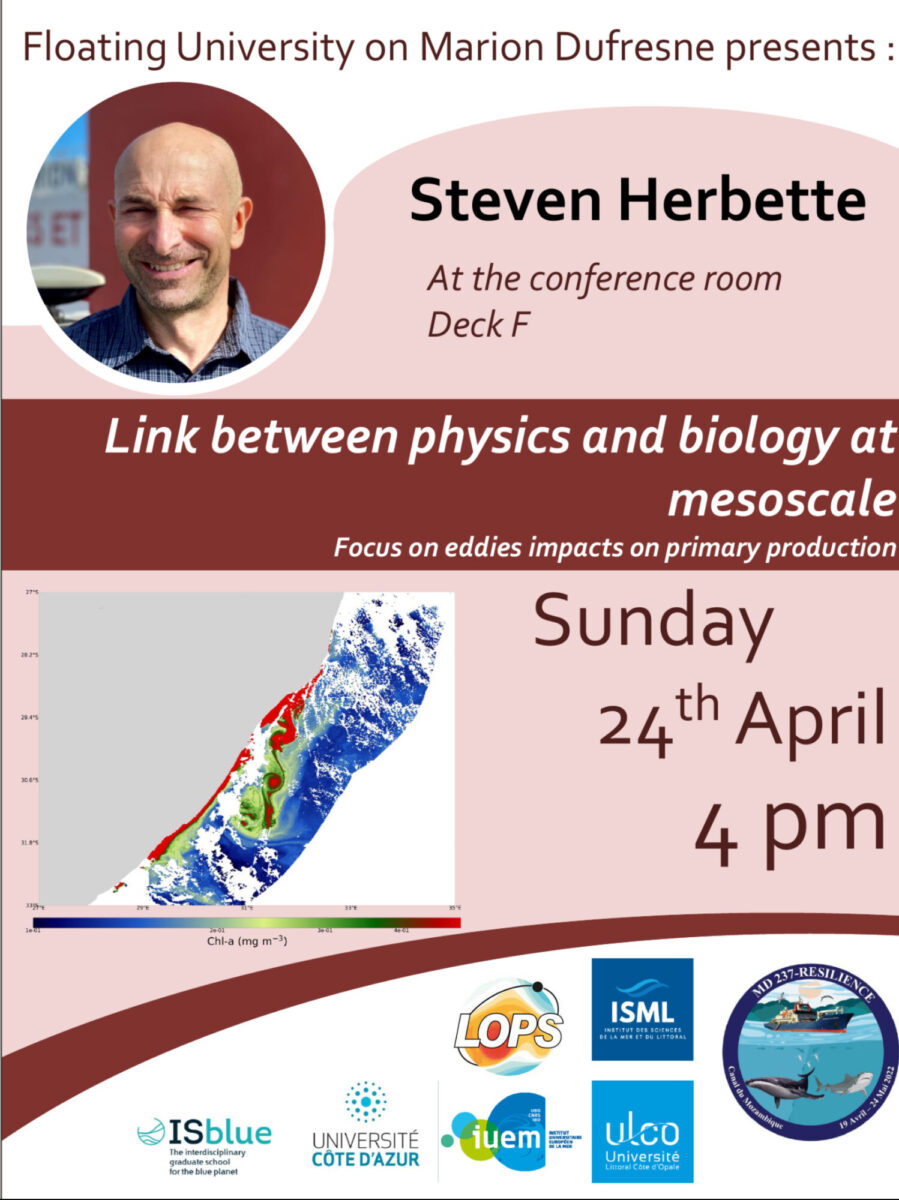
Steven Herbette is a professor at the Université de Bretagne Occidentale and a researcher on ocean physics at the Physical and Space Oceanography Laboratory (LOPS). During his seminar on board the Marion Dufresne, he talked about the links between physics and biology at the mesoscale (spatial scales of the order of hundreds of kilometers, and temporal scales of the order of weeks/months).
Mesoscale eddies, characterized by diameters of the order of 100km, are present everywhere on the ocean surface (Figure 1). They concentrate a lot of energy and are particularly intense in western boundary currents such as the Agulhas Current in the southwest Indian Ocean. When the currents are unstable, they form meanders and eddies are detached from them, they can then be reintegrated into the main current or move away from it.
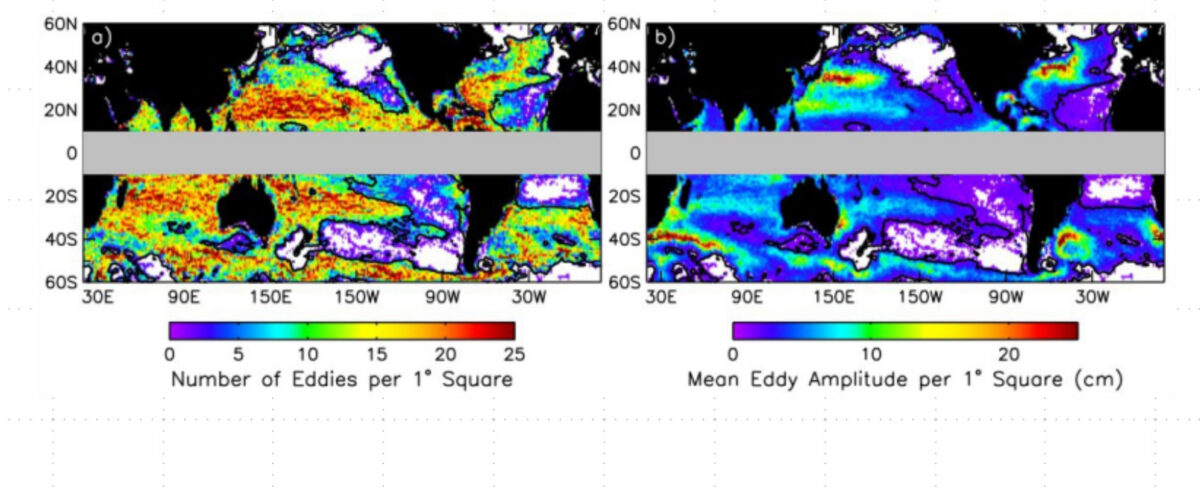
Satellite altimetry allows us to visualize these structures, by measuring the height of the ocean surface. The eddies are distinguished into cyclonic eddies, forming negative anomalies in the height of the water column (troughs) and anticyclonic eddies, forming positive anomalies in the height of the water column (humps). On a global scale, there are the same number of cyclonic and anticyclonic eddies, which will generally propagate westward.
Mesoscale eddies can explain much of the variability observed in the ocean. They are said to be non-linear: they trap tracers or passive organisms (e.g. phytoplankton) which are then advected horizontally over large distances (several thousand km).
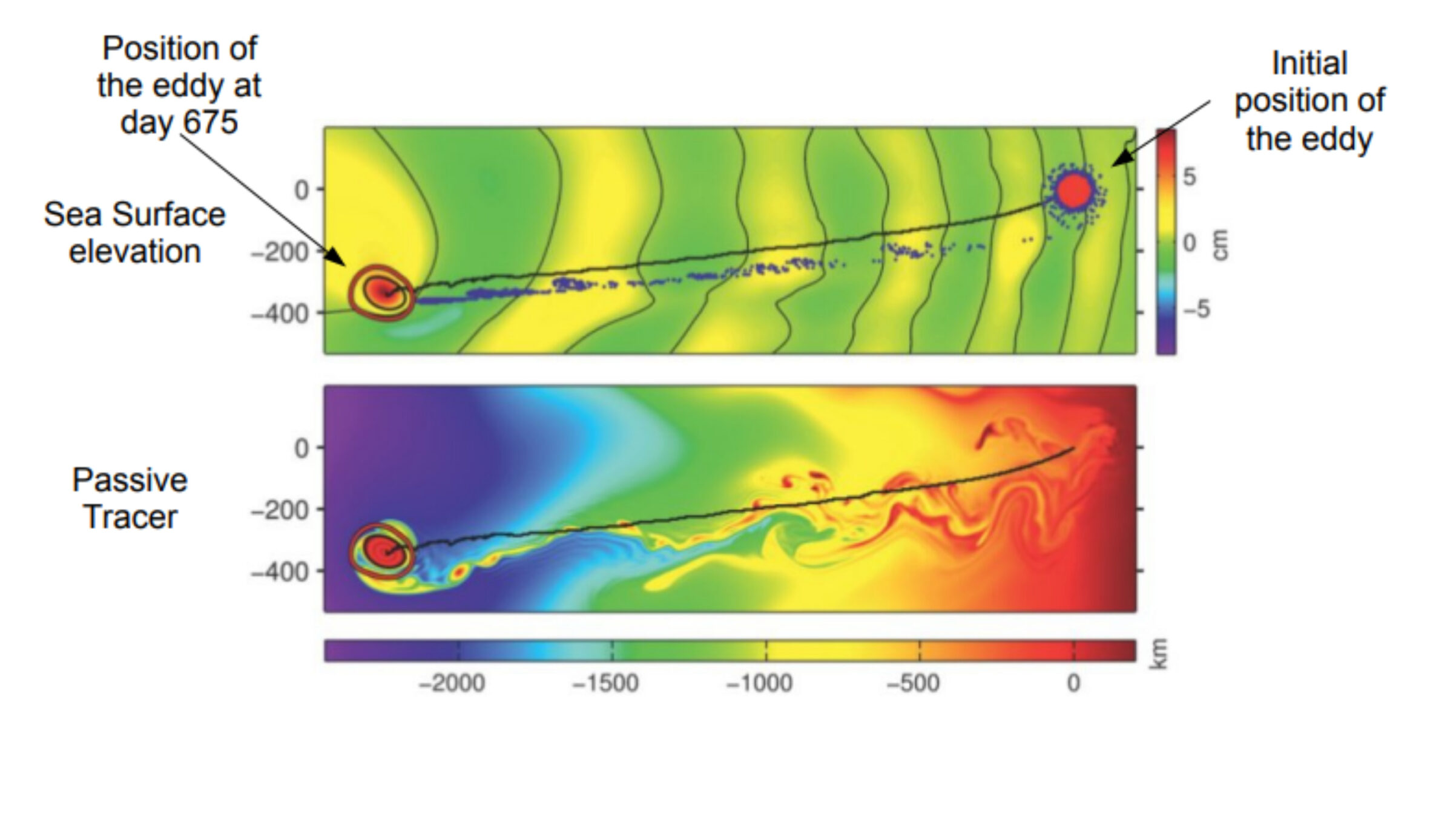
Eddies are also associated with vertical dynamics. Anticyclones make a shallowing of isopycnals (lines of equal density), indicating that denser water rises to the surface, while anticyclones are associated with the opposite phenomenon. This leads to upwellings and downwellings of water masses respectively.
Other dynamic structures of mesoscale coexist with eddies: filaments or, on an even finer scale, structures called “swirls” (of the order of 10 km in length). The latter are called submesoscale features. These different dynamic structures can be detected with satellite images of surface temperature or chlorophyll-a (figure 3). The physical, biogeochemical or biological passive properties are subject to stretching dynamics along the filaments at the edge of the eddies (this process is called “stirring”) and at smaller scales on swirls, creating strong spatial gradients. The importance of fine-scale structures (including both mesoscale and submesoscale ones) has been re-evaluated in the last 10 years: these dynamical structures are present everywhere and have strong impacts on physical, biological and biogeochemical processes at various scales.
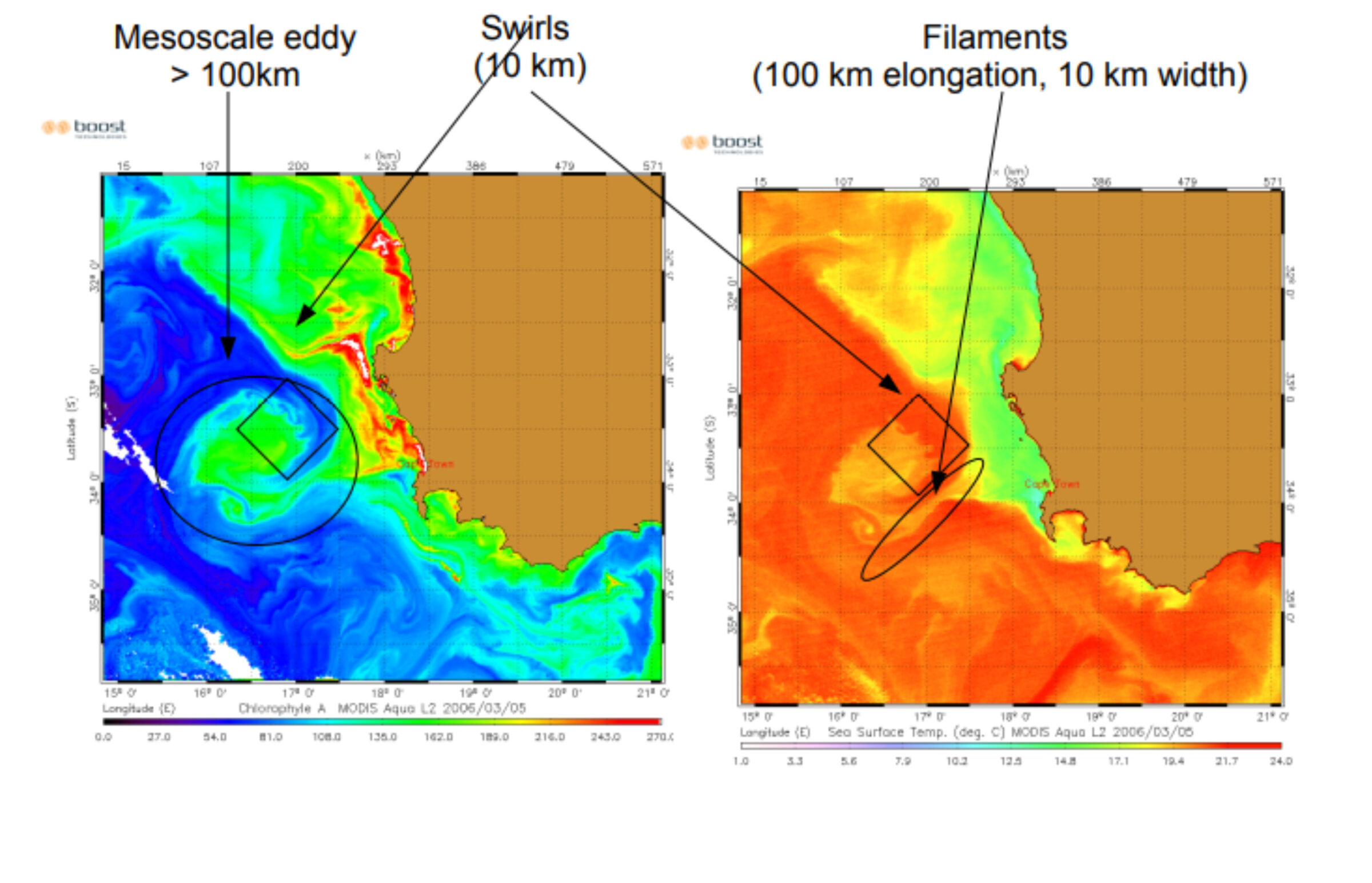
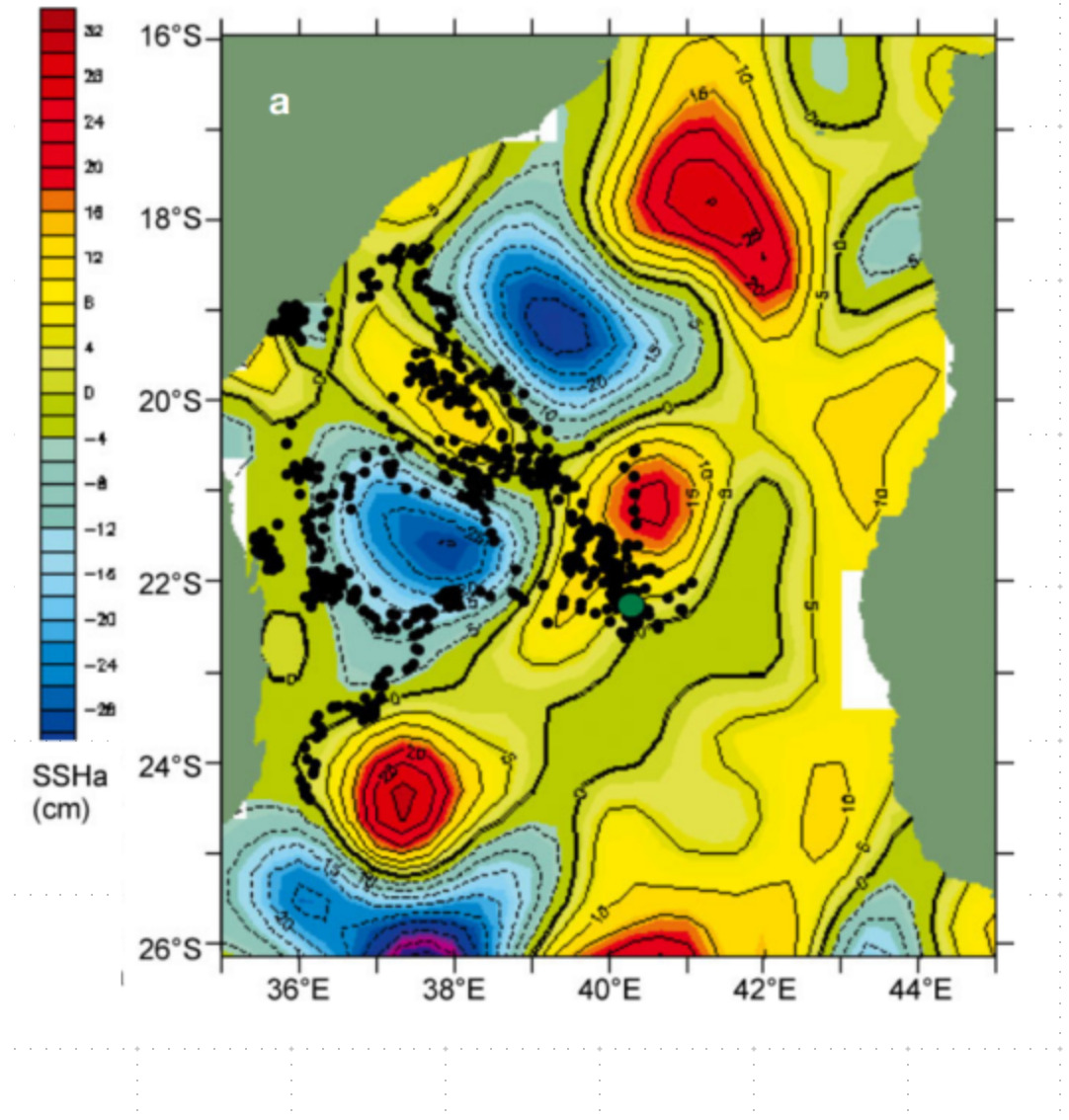
The coupling mechanisms between physics and biology are numerous and can be of different nature within the same ocean structure. For example, eddies are both associated with vertical motions, which can promote nutrient inputs and primary production, but also with horizontal transport.
Off the coast of Durban, in South Africa, rainfall results in significant nutrient inputs from the continent to the ocean. Semi-permanent eddies regularly form near the coast off Durban and transport these water masses enriched in nutrients to the open ocean. This region is therefore of great interest for the study of these so-called physical-biological coupling processes, and will be studied during our RESILIENCE mission.
The effects of these dynamic structures on marine ecosystems can be observed up to top predators, such as seabirds (figure 4). Thanks to the multi-disciplinary teams participating in the RESILIENCE mission, we will be able to study the relationships between the fine-scale and different compartments of the ecosystems.
Bibliography:
Chelton, D. B., Schlax, M. G., Samelson, R. M., & de Szoeke, R. A. (2007). Global observations of large oceanic eddies. Geophysical Research Letters, 34 (15).
Early, J. J., Samelson, R. M., & Chelton, D. B. (2011). The evolution and propagation of quasigeostrophic ocean eddies. Journal of Physical Oceanography, 41 (8), 1535-1555.
Weimerskirch, H., Le Corre, M., Jaquemet, S., Potier, M., & Marsac, F. (2004). Foraging strategy of a top predator in tropical waters: great frigatebirds in the Mozambique Channel. Marine Ecology Progress Series, 275, 297-308.
 Attention, vous utilisez un navigateur peu sûr !
Attention, vous utilisez un navigateur peu sûr !